Reviews - September 2017 - Reform Magazine
A story of racism
Detroit
Directed by Kathryn Bigelow
Certificate 15, 143 minutes
Released 25 August
Detroit, 1967. Civil unrest. Looters shot on the street by police. A largely white police force try to contain mainly black rioters. When a citizen fires a starter gun from a hotel window as a prank, the police overreact and the situation develops into the systematic harassment, torture and occasional murder of suspects. People with the wrong skin colour in the wrong place at the wrong time.
The director Kathryn Bigelow has taken great pains researching the events of the period and talking to many of those who were there. She has looked for stories of things that went on at the time and tried to reconstruct situations about which, if we’re honest, the whole truth will never be known.
A well chosen cast include British actors Will Poulter (Eustace Scrubbs in The Voyage of the Dawn Treader) and John Boyega (Star Wars: The Force Awakens) as the cop in charge and a security man who tries to help diffuse the tension. Using Mark Boal’s well-written script as a basis for improvisation, Bigelow deploys these actors and others to electrifying effect.
It’s tough to watch; not for the faint hearted. But that doesn’t mean we should refuse to watch and engage. Although set half a century ago, Detroit articulates and captures on screen the pain many black people feel towards white people in the US. To boot, it also impressively recreates Motown style gigs and shows musicians, through no fault of their own, being caught up in the unrest, their promising careers and indeed lives being destroyed in the process.
My praise isn’t unreserved, however. With Bigelow’s later films including The Hurt Locker and Zero Dark Thirty, Detroit has half an eye on the Oscars: it tries a little too hard to push the right buttons. Early on, there’s a scene in which a small black child at a high up window is shot by white cops misreading her as a sniper. To me, that said everything about race in America far more succinctly than the lengthy, main body and story of the film. But see it for yourself and make up your own mind.
Jeremy Clarke is a film critic
___
Muslim Britain
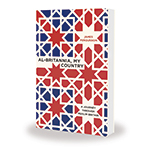 Al-Britannia, My Country: A journey through Muslim Britain
Al-Britannia, My Country: A journey through Muslim Britain
James Fergusson
Bantam Press
£20 (hardback)
ISBN: 9780593077375
Don’t read Al-Britannia, My Country unless you’re prepared to let go of prejudices against Muslims, and seek a deeper understanding beyond headlines which have fanned the flames of fear and hatred. With terrorist attacks and reprisals targeting Muslims, ignorance and tensions between cultures challenge the so-called British quality of tolerance and respect. Fergusson offers no simplistic solutions in our struggle with immigration and integration as we shape our multicultural country.
Fergusson offers a travelogue to ten Muslim communities, fascinating stories of migration, community-building and integration. Obvious places on his journey include Oldham, where Muslim women are now taking a greater lead in community matters; Birmingham, hitting the headlines because of schooling; and Leicester, with its tension between a settled, peaceful community and the more radical teaching of Muslim scholars. But High Wycombe? Not exactly a hotbed of Islamic militancy. And yet, Fergusson concludes, it is the terrorist convert capital. As he listens, so he challenges – whether government initiatives such as Prevent, or bigoted views – and he exposes wrong behaviour whatever the culture.
His first stop was Dewsbury, where we worship – a town with a separate Asian enclave, the home of one of the 7/7 bombers, and a target for far-right marches. In Dewsbury, Christians and Muslims walked together in solidarity, and United Reformed Church ministers gained access to a radical training college. Fergusson talked with people of different ethnic backgrounds, building up a rich and complex story.
The book ends with his personal Ramadan diary – in the middle of which Jo Cox was murdered. My wife and I were only a few streets away that day, ironically commenting on how the community seemed one of multicultural harmony, just the kind of society Jo Cox worked for. Fergusson leaves us with this sense of being so close to a ‘united kingdom’, yet so far away. So much achieved but so much further to travel together in our shared country.
Kevin Watson is one of the United Reformed Church’s General Assembly Moderators, and is also Moderator of the URC’s Yorkshire Synod
___
Multicultural church leadership guide
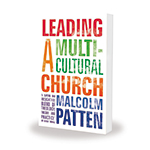 Leading a Multicultural Church
Leading a Multicultural Church
Malcolm Patten
SPCK
£12.99
ISBN: 9780281075041
This book was written with passion and a wealth of personal experience. Malcolm Patten, currently serving in the Connexional team of the Methodist Church, offers those in multicultural ministry both refreshing theological reflection and tools for leadership in that context.
Leading a Multicultural Church is an easy read divided into two parts. The first explores the hermeneutics of Old and New Testament narratives in order to construct a biblical understanding of a multicultural church. The author discusses the political philosopher Lord Bhikhu Parekh’s call for unity without uniformity in multicultural communities. Patten also considers the psychologist Gordon Allport’s proposals for the conditions necessary to overcome preconceptions and to cultivate a healthy, growing multicultural church. The second part takes the values thus established and applies them to four areas of church life: worship, mission, leadership and pastoral care.
One of the biggest challenges that have to be faced head on when it comes to empowering people of colour to take up positions of leadership in the Church, is racial prejudice. In my experience, white people do not believe people of colour can be trusted with powerful positions. However, by challenging the racism and empowering some people of colour in my local situation, they are now exercising leadership well. The Methodist Church has deliberately – and not without pain – sought to bring people of colour into positions of leadership, from grassroots to Connexional level, and church growth has resulted. If the United Reformed Church is going to see meaningful church growth in the area of multicultural ministry, it needs to follow that example.
This book provides fresh insights for developing a healthy multicultural environment that will overcome the prejudice that has been the norm throughout the Church Catholic for decades, if not centuries. I warmly commend this book as a resource for all those who are inspired to develop and lead a multicultural ministry at all levels of the Church.
Naison Mavesere Hove is a church minister serving at Askew Road Church in Shepherds Bush, London
___
Facing up to atheist arguments
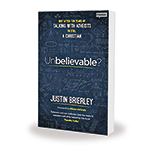 Unbelievable?: Why after ten years of talking with atheists, I’m still a Christian
Unbelievable?: Why after ten years of talking with atheists, I’m still a Christian
Justin Brierley
SPCK
£9.99
ISBN: 9780281077984
Justin Brierley belongs to several minority groups in the United Reformed Church. He is a man. He is under 40. He belongs to a large local church. He is married to a minister. One other minority group is key to his first book: he positively enjoys talking about his faith with those who disagree with him. It is apt that he wrote the book in a coffee shop.
Brierley has made a career out of his enthusiasm. For ten years he has presented a radio show where the normal format is a Christian debating with an atheist while Brierley aims to be a neutral facilitator. For the book, he has abandoned neutrality and drawn on his many conversations with atheists to consider contemporary challenges to the claims of Christianity. In a readable style, successive chapters look at the classic areas of apologetics, such as arguments for the existence of God, the divinity of Christ, the purpose of life and the truth of the resurrection. He does not duck the problem of suffering.
In each case, Brierley presents the arguments used by atheists, acknowledging their strengths, as well as Christian responses. He explains his own conclusion that, on balance, orthodox Christian belief still makes most sense of the evidence accessible to a human mind. When the argument gets difficult, it is still to CS Lewis’ clarity of mind that recourse is made, more than half a century after his death. CS Lewis did not have to deal with Richard Dawkins, however, who has a chapter named after him.
More significantly, Lewis did not have to deal with the internet. The bizarre assumption that a theory on the internet must have some validity is, in Brierley’s view, promoting intellectually hollow critiques of Christianity on an unprecedented scale.
Brierley attributes his own evolving insights to his radio conversations, not to his wife’s sermons. If he is right about the questions people are asking, perhaps preachers should be more often attempting to answer them. Certainly his book would be a fascinating basis for a sermon series or a potentially life-changing gift to a questioning grandchild.
John Ellis is Immediate-Past Moderator of the United Reformed Church General Assembly
___
How to be an intentional photographer
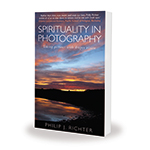 Spirituality in Photography: Taking pictures with deeper vision
Spirituality in Photography: Taking pictures with deeper vision
Philip J Richter
Dalton Longman & Todd
£9.99
ISBN 9780232532937
This modest taster volume invites the reader – and perhaps, a church group using it as a workbook over several sessions – to move beyond snapping to creating images that express spirituality, and might be a spiritual resource for others. Group use would enable an experienced or enthusiastic leader to nurture and encourage the habit and skills of intentionally capturing what is seen rather than, frustratingly, merely recorded.
Although it does not aspire to be a manual of technique, the few hints in each chapter are of real value. This book is underwritten by a fair bit of experience and practical knowledge, which will date less than the models of mobile phone photography mentioned at the end of each chapter.
I’ve been in photo situations such as mysterious fog and wonderful sunrise, when all around are getting frustrated at how poorly automatic cameras cope. It’s then I might happily have referred friends to the chapters of this book. I wonder, though, if the idea of leaving pages blank to paste in significant prints is already obsolete in a digital world.
I welcome the book’s emphasis on celebration at the heart of images. It is not about the glamorous, glossy stuff that would fill a coffee-table book. This useful little book could be stuffed in a jacket pocket when you are out and about with camera or phone.
I found the links and references to mostly biblical spiritual passages a touch strained, as if the author was putting them in because he felt he should, though these might also form the basis of a devotional beginning or end when a group meets. If enthusiastic readers learn to thoughtfully frame a picture rather than just snap away, then the friends, family and church they will inflict it on are likely to be deeply grateful.
David Coleman is minister of Greenock West United Reformed Church, Inverclyde
___
This article was published in the September 2017 edition of Reform




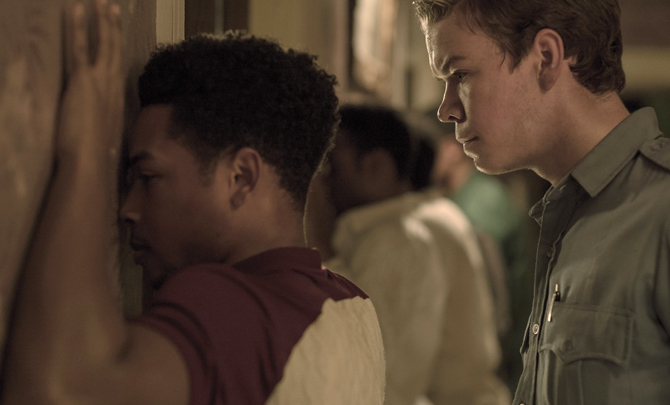









Submit a Comment